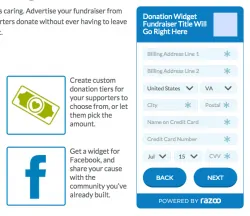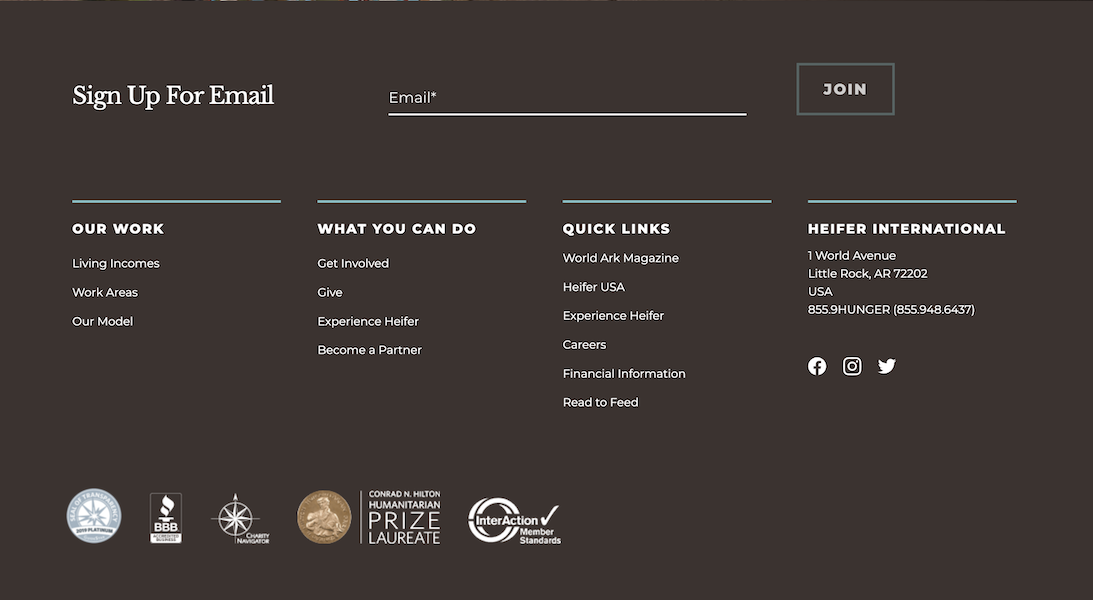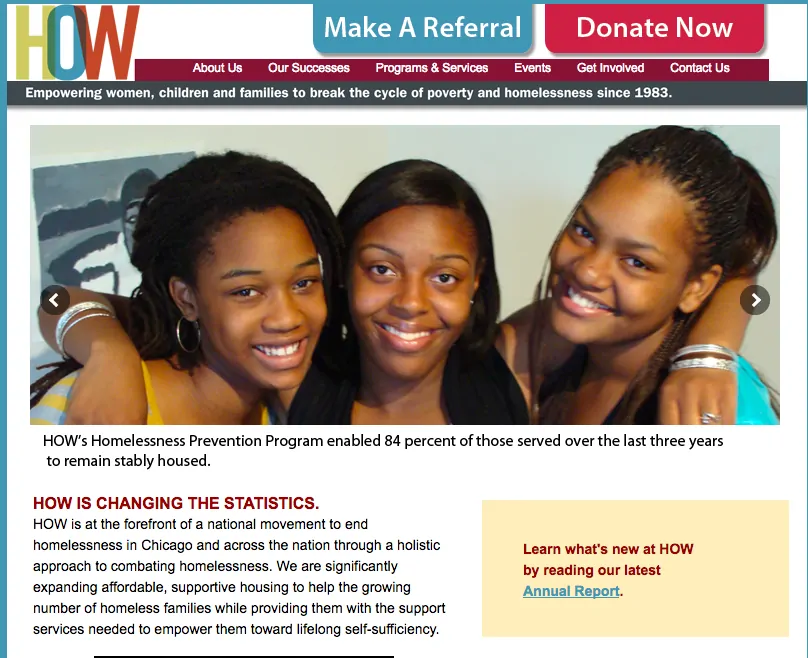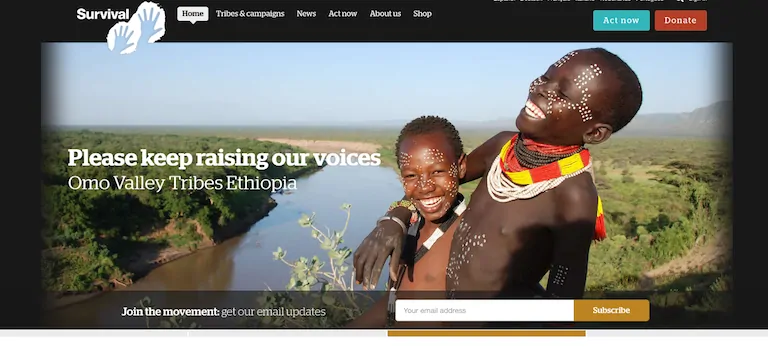Nonprofits are even more well-positioned than ever before to take advantage of millions of potential online donors
People are looking for the right type of charity that will resonate with them and motivate them to effect change by making a donation.

People are looking for the right type of charity that will resonate with them and motivate them to effect change by making a donation.

Information overload, not to mention literally millions of nonprofits to choose from can lead to option paralysis at which point a potential donor puts off for tomorrow what they could do today or decides to donate to the biggest most visible nonprofit out there.
That’s why it is important for all nonprofits and especially smaller organizations to understand what motivates people to donate to charity.
While the largest nonprofits are the most well-funded and have the advantage of the efficiency that comes with scale, particularly in more capital-intensive fields, small nonprofits are too often overshadowed and underfunded by their larger counterparts. Small, underfunded nonprofits are doing critical work in their communities too.
That being said, let’s explore some of the hows and whys of what motivates people to donate to help your nonprofit capture more donations online.
1. People connect with personal stories-
Your potential donors care about a story that they can identify with, an individual story. According to one study, there is evidence that more donations can be achieved when an organization chooses to build a fundraising campaign around a specific human or environmental interest story. And in the same study, it was found that charities collected more donations when the story was about a single recipient of aid when the story had a face that people connect to on an emotional level.
When it comes to charitable donations, we humans really think with our hearts.
When people see that an organization is taking care of someone real and impacting an individual living in a meaningful way, people are more likely to give. And when you compare the effectiveness of driving donations with statistics as compared to using an avatar, there is no comparison. Research from behavioral scientists like Chris Olivola supports this idea.
2. Your donors can make a difference-
When seeking to dig deeper into what motivates people to donate, your nonprofit should understand that people need to feel and believe that they can make a difference. It’s called agency and thanks to this strong impulse within us, we as a society have been able to solve some monumental problems.
Much of our day-to-day efforts to solve the world’s most intractable problems from environmental issues to poverty issues and human rights are being accomplished thanks to individual donors. Donors should be made aware of the power they have, and be reminded that even small donations can have an impact.

3. People who donate feel better about themselves according to this Harvard Business School finding–
and may actually be happier immediately around the time of charitable giving and even into the long term. According to the Harvard Study, charitable giving can have put into motion a complex positive effect, a paradigm shift of sorts where good follows good and a chain reaction of positivity could be the result.
When many global trends are moving in negative feedback loop trajectories, this research is welcome news.4.
People give to belong–
and to gain access to social affinity groups. Whether giving qualifies people to have authority within a group or simply gives them personal validation as a beneficial member of society, there is little doubt that the appeal of joining a movement of care triggers a powerful impulse that can be leveraged when trying to raise funds for a cause.
Just look at the upswell of support for Water Protectors protesting the Dakota Access pipeline project for a great example of how wanting to belong to an affinity group, and the motivation to see justice done is making it possible for a small organization to grow in strength and create change all over the world.
5. Tax deductions-
do not usually motivate individuals to give, by themselves but they do sweeten the pot. Companies are a different story and may actively seek out nonprofits purely for tax benefits.
Whether the donor is giving from the heart or not, you can make the decision about whether to give or not easier by clearly stating that their contributions are tax-deductible. Every little detail counts and a reminder about tax-deductible donations is a powerful leverage point to seal the deal.
A commercial co-venture partnership can take on a variety of creative forms- branded advertising is one route that is most visible and used by the biggest and most powerful brands in the world. But there are other methods, like affiliate partnerships that allow nonprofits to control the advertising and sometimes even the branding of an e-commerce shop.
1. Telling Stories-

Which of the following do you think would be more engaging? A series of statistics and data points to illustrate the relevance of an idea or experience or a moving story about an individual who faced a challenge and overcame it.
Stories are the lifeblood of successful engagement with potential donors. Learn to recognize to cultivate great stories when engaging with potential donors and be ready to inspire.
2. Engaging people on an emotional level-
When asking yourself what motivates people to donate remember that whether it’s a consumer purchase or a donation, emotion outranks logic. This is related to the previous point. Remember that people are far more likely to give when triggered on an emotional level. Your organization can do this by sharing a curated, personal story of adversity that describes your nonprofit’s purpose and mission and gives a concrete example of what success looks like.
Partner with a brand through a commercial co-venture relationship to expand your reach (and increase revenues).
The research shows that a personal interest story outperforms statistics. With this knowledge, convey to your donors how difficult the problem was and reward them with an uplifting story of how that problem is being addressed by your organization. People make buying decisions with their hearts, not logic.
3. Setting up your website to receive donations-
is super easy and something no nonprofit should neglect to do. The fastest way to get started immediately and enable your website to collect donations is to provide a link to your organization’s PayPal account.
A reason to use a PayPal donation button or link is that you don’t have to worry about security issues on your website as the donor will make their payment directly at PayPal. For solutions more customized specifically for nonprofits, there are several other tools to help set up a smooth and integrated donation experience on your website:

is a free online fundraising software. If your nonprofit gets less than $1k in donations for a month, this software could be an excellent choice. Donorbox will provide a secure payment gateway that will give your donors a branded transaction experience right on your website.
Another popular option…
This service offers more customizable features and allows you to get started at a 4.9% baseline transaction fee (see the full details here). If you choose to take payments on your website, you will need to install secure socket layer encryption (SSL) to protect the confidential financial information of your donors.

With each passing day, people become more accustomed to shopping with smartphones.
Nevertheless, we are constantly reading breaking headlines of hacks and data breaches. These news stories give some would-be donors the jitters. By using verification badges and advertising the security features of your checkout platform, you will give your donors the confidence they need to complete their transactions worry-free.
Here’s a great example at heifer.org of their gift catalog footer which contains an array of trust and security badges as well as a Charity Navigator link.

1. Trust badges can be expensive. To start out, look for free badges that you can embed on your site. One free way to associate your nonprofit with a well-known brand is to link to Charity Navigator. A nonprofit directory really like Charity Navigator is really for the big fish, small nonprofits not so much, but having a trusted link on your site could help. It’s worth testing out if you want a free endorsement. And if your organization is on Charity Navigator already, that’s even better.

2. As you probably know, people research more now than ever before, and checking the financial records of nonprofits before making a donation is commonplace. Sites like Guidestar provide financials on many nonprofits and analyze the efficiency of their operations. Take the cue and take control of your data by presenting your financial information on your website. You will quickly earn the trust of anyone who browses your site looking for a place to give. Take a look at how one nonprofit

features their financials prominently on the first page of their site in order to build trust from the moment someone visits their page.
3. We already know that people like to go where others have already gone. That’s why providing social proof on your website can go a long way to reassuring site visitors that you are not an unknown rogue out there on the internet but a trusted partner with proven relationships.
Social links are just about the easiest approach you can take to build the social story for your company. Showing the logos of companies you work with is a great way to show you are a connected nonprofit and part of a network of support. You can make money advertising by simply displaying partner logos.
Give your donors a greater sense of the community that supports your organization by creating a stronger community network that includes businesses as well as the people who support you through charitable contributions. Alliances with other organizations can lend social proof and bring in donations through charity shopping too.
4. The Power of Images- When we talk about playing to people’s emotions and appealing to their hearts, we might think about the message and the story we deliver. But don’t forget the power of images.

Past research has shown that the old adage “a picture is worth a thousand words” is true. Draw people’s attention by using high visual impact images and well-designed donation pages. Put the power of an image to use here.
5. Keep online requests simple- When it comes to the donation form itself, that’s where you want to keep it simple. We live lives of filling out one online form after another and do you know which forms are actually finished and submitted? The ones that don’t ask for much, are the ones.
Ask for only the bare minimum and see your donations increase. And simplify the donation page as a whole. When someone navigates to your donation page, they are ready to take action, so help to streamline their focus by removing as many distractions, sidebars, headers, and links from the donation page as possible.
6. Follow Up & Follow Up Again- When the donation is through, make every attempt to keep the donor engaged with your company. Use emails, thank you pages, and opt-in checkboxes to get that donor signed up to your email list.
By doing this, you will give your company the precious opportunity it needs to stay engaged and build a strong and lasting contributor base that will power new projects and services and help your organization grow.